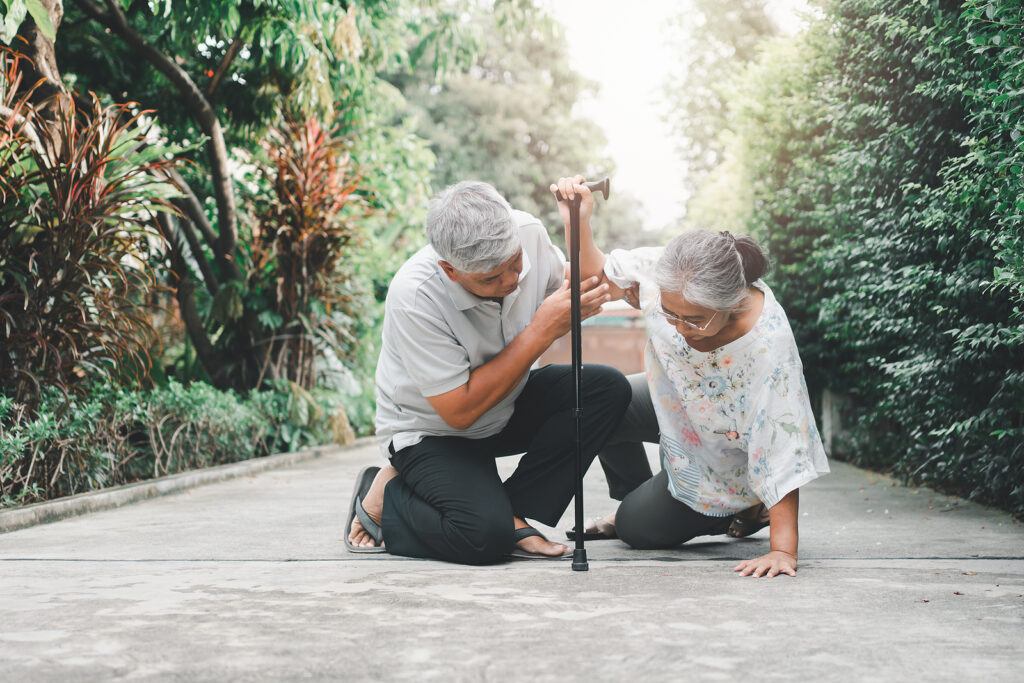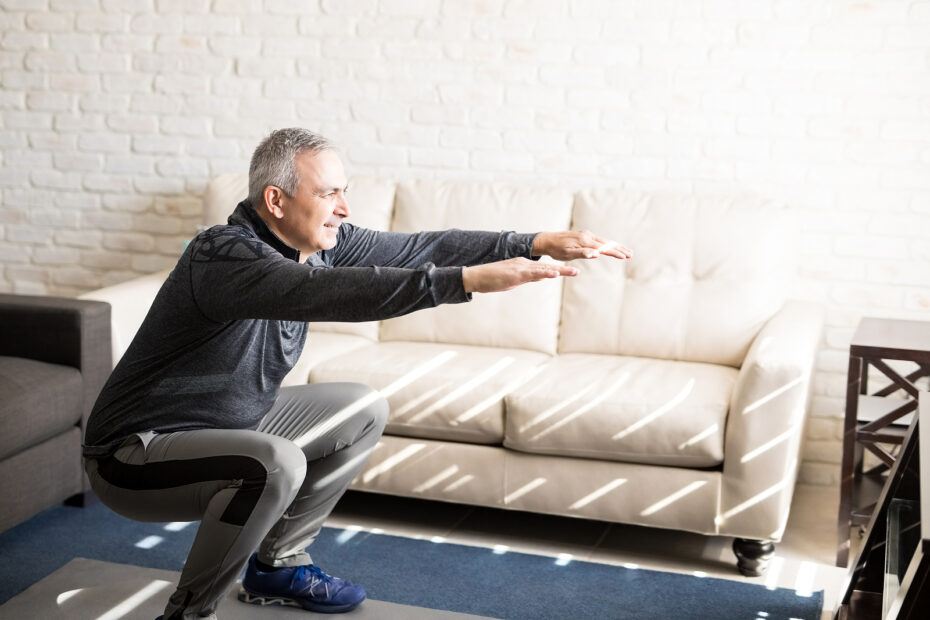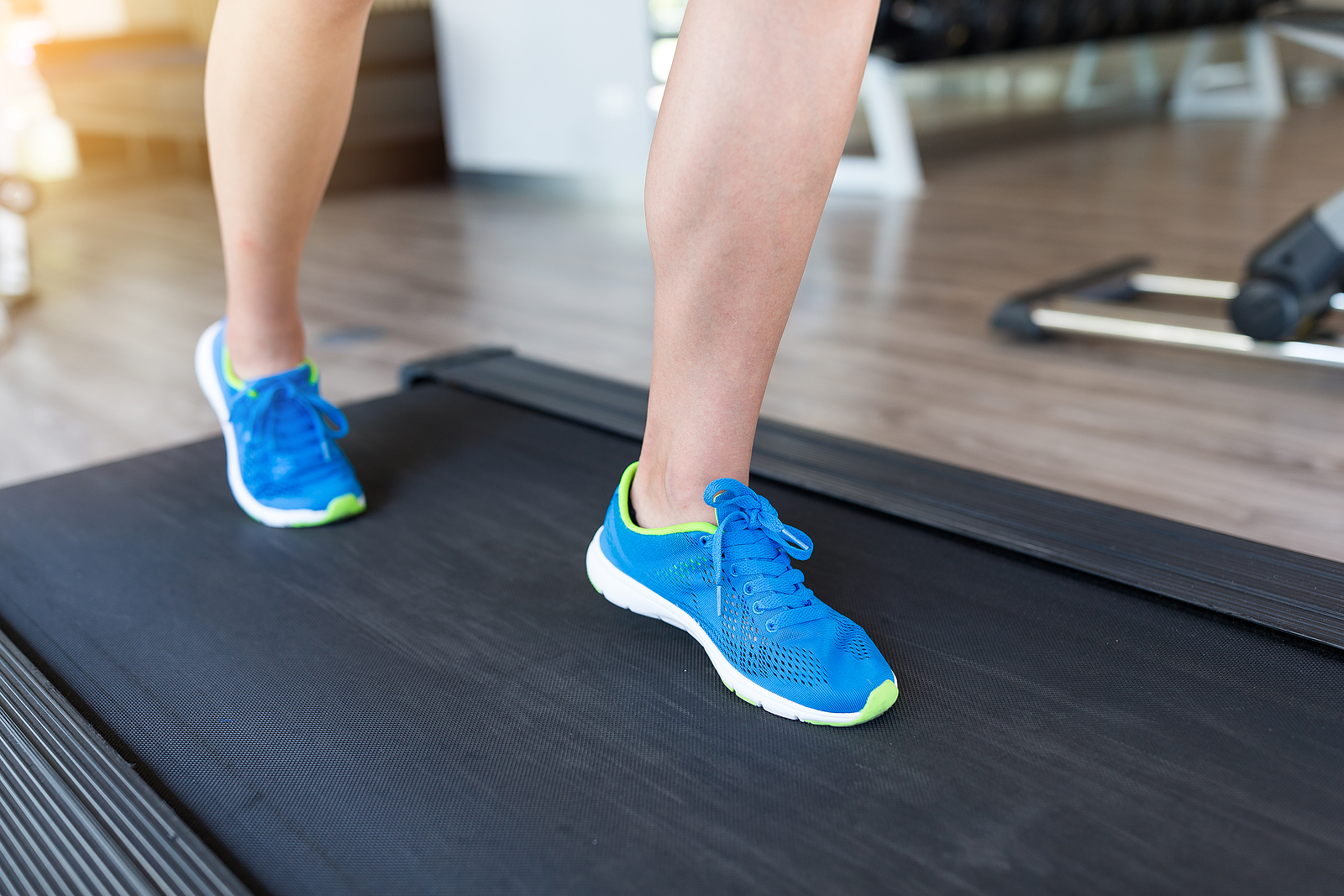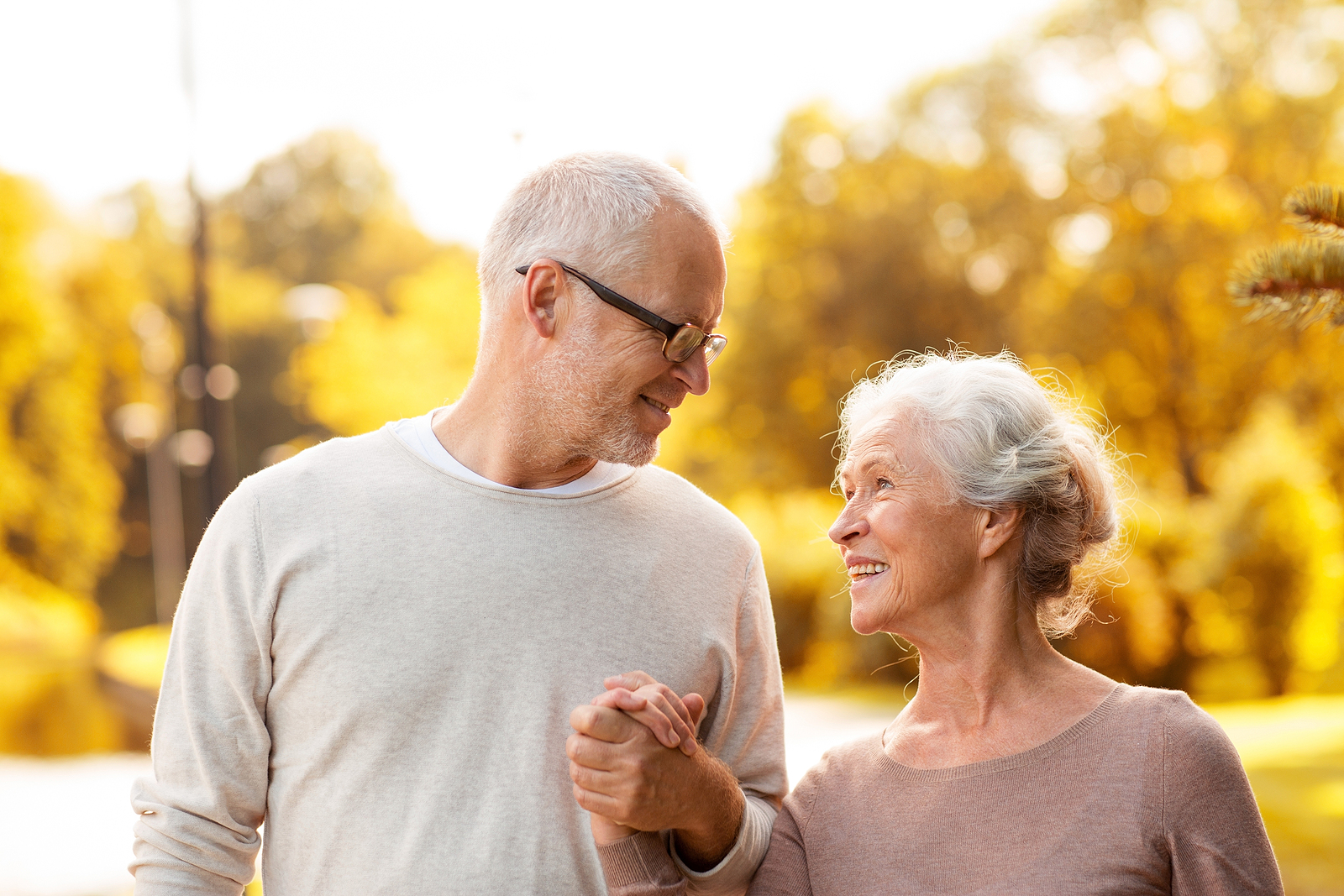Maintaining leg strength is important for seniors to support mobility and independence, but it also plays a key role in reducing the risk of falls.
And unfortunately, muscle mass declines naturally with age.
However, this decline doesn’t have to be inevitable – regular exercise can significantly slow or even reverse these changes.
By dedicating time to leg strengthening exercises, seniors can boost their ability to perform daily tasks while reducing their fall risk at the same time.
And these exercises are simple, effective, and can be done at home with minimal equipment too, which is always nice.
In this guide, we’ll go over the importance of leg strength when it comes to balance, as well as share some of the most effective strengthening exercises to improve standing balance.
After reading, you’ll be ready to start reaping the benefits of improved stability today.
Leg Strength & Standing Balance
Falls are often caused by a combination of factors and it can be tough to pin-point a single cause.
Tripping over unseen obstacles and other one-off accidents can happen to the best of us, but if you’re falling regularly or feeling unstable on your feet, it’s likely from a combination of possible issues.
These include weak muscles, poor coordination, and slow reaction times.
Improving things like coordination and reaction times can be inherently difficult (although balance exercises can help), especially for older individuals, but improving muscle strength is pretty straightforward.
Luckily, research suggests that improving leg strength can help improve reaction times and reduce overall fall risk for seniors.
This is likely due to the fact that strengthening the legs improves the body’s ability to stay upright and recover from sudden movements.
Additionally, stronger legs reduce fatigue during daily activities, allowing seniors to stay active for longer periods without compromising balance.
Overall, leg strength is a cornerstone of mobility and balance because strong leg muscles:
- Provide stability during standing and walking.
- Reduce the risk of falls by improving reaction times.
- Enhance confidence in performing everyday tasks like climbing stairs or rising from a chair.
- Support better posture, which minimizes the likelihood of losing balance.
- Enable quicker recovery from stumbles, preventing them from turning into full falls.
By dedicating time to leg strengthening exercises, seniors can help maintain their independence and improve their overall quality of life.
Safety First
Before starting any exercise program, it is essential to:
- Consult with a healthcare provider to ensure the exercises are appropriate for your health condition.
- Use a countertop, sturdy chair, or wall for support to reduce risk of falls (as needed).
- Wear comfortable clothing and non-slip footwear.
- Perform exercises on a flat, non-slip surface in a well-lit area.
6 Leg Strengthening Exercises to Improve Balance
1. Sit-to-Stand
This is a great exercise for seniors because it’s generally safe to do and it works a ton of muscles at the same time.
It also happens to be a functional activity we all have to do everyday.
When it comes to overall leg strengthening, it’s hard to think of a better exercise that doesn’t require any equipment.
This is why I use this exercise (or a similar variation) with just about every senior patient I work with.
- How to do it:
- Sit on a sturdy chair with your feet flat on the floor and arms crossed over your chest (or extended out in front).
- Slowly rise to a standing position without using your hands.
- Lower yourself back down and repeat for sets of 5-10 reps.
- Benefits: Strengthens quadriceps, glutes, and trunk; improves functional mobility; forces body to stabilize when performing unsupported.
Helpful hint: performing a sit-stand transfer without using your arms works your muscles harder and adds a balance component to this exercise, but it’s ok to push off with a hand or two if necessary. Also, the lower and softer the chair you use, the harder this exercise is.
2. Calf Raises
It’s easy to forget about the calf muscles when thinking about balance and mobility, but having strong calves can be quite beneficial.
I don’t want to get too technical here, but having a powerful push off while walking makes it easier to clear each foot when walking, reducing the chances of stubbing your toe or tripping.
This is also a great exercise for improving circulation through your legs.
- How to do it:
- Stand next to a countertop or chair for support.
- Slowly lift your heels off the ground, standing on your toes.
- Lower your heels back down and repeat for sets of 10-15 reps.
- Benefits: Builds strength in the calves and improves ankle stability, improve quality of walking.
Helpful tip: you can make this exercise harder or easier by changing your hand hold – having two hands on the counter is easier than 1 hand and no hands is the hardest.
3. Side Leg Lifts
There are a lot of different ways to strengthen your hips, but this one’s low-impact and usually pretty comfortable for seniors to do.
This exercise works the hip abductors, ie the muscles on the sides of your hips, which are important pelvic stabilizers during walking.
- How to do it:
- Stand at your kitchen counter, holding onto it for support.
- Lift one leg to the side, keeping it straight and your toes pointed forward.
- Hold for a second and then lower the leg slowly back to the starting position.
- Repeat for sets of 10-15 reps per leg.
- Benefits: Strengthens hip abductors, enhances lateral stability, improves stability while walking.
Helpful tip: you can make this exercise harder by taking hands off the counter, but you can also use small ankle weights or a resistance band for added resistance.
4. Front Step-Ups
This is another personal favorite when it comes to leg strengthening from home because it involves a lot of different muscles working together at the same time.
The quads and glutes are the focus here, but the hip flexors have to elevate the leg over the step.
I also like this one because it gets the heart rate up, the lungs working, and because it can improve safety/confidence with going up/down stairs.
- How to do it:
- Stand in front of a step, staircase, or sturdy platform. Feel free to hold onto a rail for support.
- Step up with one foot, followed by the other, then step back down.
- Repeat for sets of 10-15 reps per leg.
- Benefits: Strengthens quadriceps, hamstrings, and glutes while improving balance.
5. Wall Sits
This is a great exercise for seniors because it’s isometric, meaning the muscles contract without any noticeable movement.
This makes it remarkably low-impact, while being an effective strength booster.
- How to do it:
- Stand with your back against a wall and feet shoulder-width apart.
- Slide down the wall as far as you feel comfortable, keeping in mind you have to be able to push yourself back up.
- Hold the position for 10-30 seconds and gradually increase the duration as you get stronger.
- Benefits: Engages the quadriceps, hamstrings, and glutes.
Helpful tip: keep an eye on the location of your knees as you slide down into your squat position – your knees shouldn’t extend over your feet. If they do, slide your feet out farther away from the wall.
6. Marching in Place
Marching is a great exercise because it strengthens your hip flexors, but it also gets your heart rate up and mimics the alternating fashion of walking.
- How to do it:
- Stand tall and lift one knee as high as comfortable, then lower it.
- Alternate legs and march in place for 1-2 minutes.
- Benefits: Improves hip flexor strength and overall leg coordination.
Helpful tip: feel free to place a hand on a counter for stability if necessary, but try to progress to marching without any assistance.
Additional Tips for Success
Progress Gradually
To achieve the best results with leg strengthening exercises, it’s important to start slow and progress gradually.
Begin with a few repetitions and increase them over time as your strength and confidence improve.
A good goal is to work up to performing 2-3 sets of 10-15 reps for your chosen exercises.
Speaking of which, don’t feel like you have to perform all of the exercises listed here – feel free to choose 3 or 4 to add to your routine.
Consistency is key, so aim to perform these exercises 3-4x a week to build and maintain muscle strength.
Focus on Form
Focusing on proper form is crucial to ensure the exercises are effective and to reduce the risk of injury.
Pay attention to your posture and movements, and don’t rush through the exercises.
Steady breathing is another important factor; make sure to exhale during exertion and avoid holding your breath while performing the movements.
Track Progress
To keep yourself motivated, track your progress and celebrate small achievements along the way.
Whether it’s completing an extra repetition or holding a position longer, these milestones can provide encouragement and a sense of accomplishment.
With patience and persistence, you can experience significant improvements in your strength, balance, and overall confidence.

Just in Case A Fall Happens
Even if we prepare and do everything right, doesn’t mean a fall can’t still happen.
But if it does, having stronger legs will still come in handy.
In addition to enhancing balance and preventing falls, strong leg muscles play a critical role in helping you recover if a fall does occur.
The ability to push yourself up from the ground requires strength in your quadriceps, hamstrings, and glutes, as well as coordination and stability.
By maintaining and building leg strength, you’ll be better equipped to get back on your feet safely and independently.
For example, exercises like sit-to-stands mimic the movements needed to rise from the ground.
And strengthened leg muscles make it easier to transition from a seated or lying position to standing.
Being able to get up from the ground not only enhances physical safety but also provides a sense of confidence and self-reliance.
Knowing that you have the strength to recover from a fall can alleviate fears and allow you to remain active and engaged in daily activities.
Final Thoughts
Being stronger helps everything, so we should all try to incorporate strengthening exercises into our exercise routines.
This is true for all of us, but it’s especially true for seniors.
Between the natural loss of muscle mass (sarcopenia) and reduced activity levels, seniors are at a much higher risk of losing functional strength.
In fact, I’d argue that generalized weakness is one of the top factors contributing to a lot of the issues seniors deal with.
But again, there are things we can do as we age to combat this.
Leg strengthening exercises like the ones mentioned above are an excellent way for seniors to enhance standing balance, reduce the risk of falls, and maintain independence.
And these simple yet effective movements can be done at home, making them accessible to everyone (they can also be modified depending on your skill level).
Remember, consistency is key, and small, regular efforts can lead to significant improvements over time.
So stay active, stay safe, and enjoy the confidence that comes with stronger legs!
And as always, if you have any questions or comments, just leave ’em below and I’ll get back to you shortly.




please recomend a physical therapist in Hilo, hawaii , my insurence will pay for it. I have a very serious loss of balance, i can not stand on one leg for more then a few seconds. Also I have a small size trampoine , 4.5 ft radious. Jumping on it is supposed to help the mind clear to help balance. Any comments would be appreciated. My phone number is 8083338275. Thank you. Albert
Hi Albert, I don’t know any therapists in Hawaii, so I’m afraid I can’t be of any assistance with that, but if you reach out to your primary care physician they should be able to refer you to a qualified PT in your area. Good luck and thanks for reading!